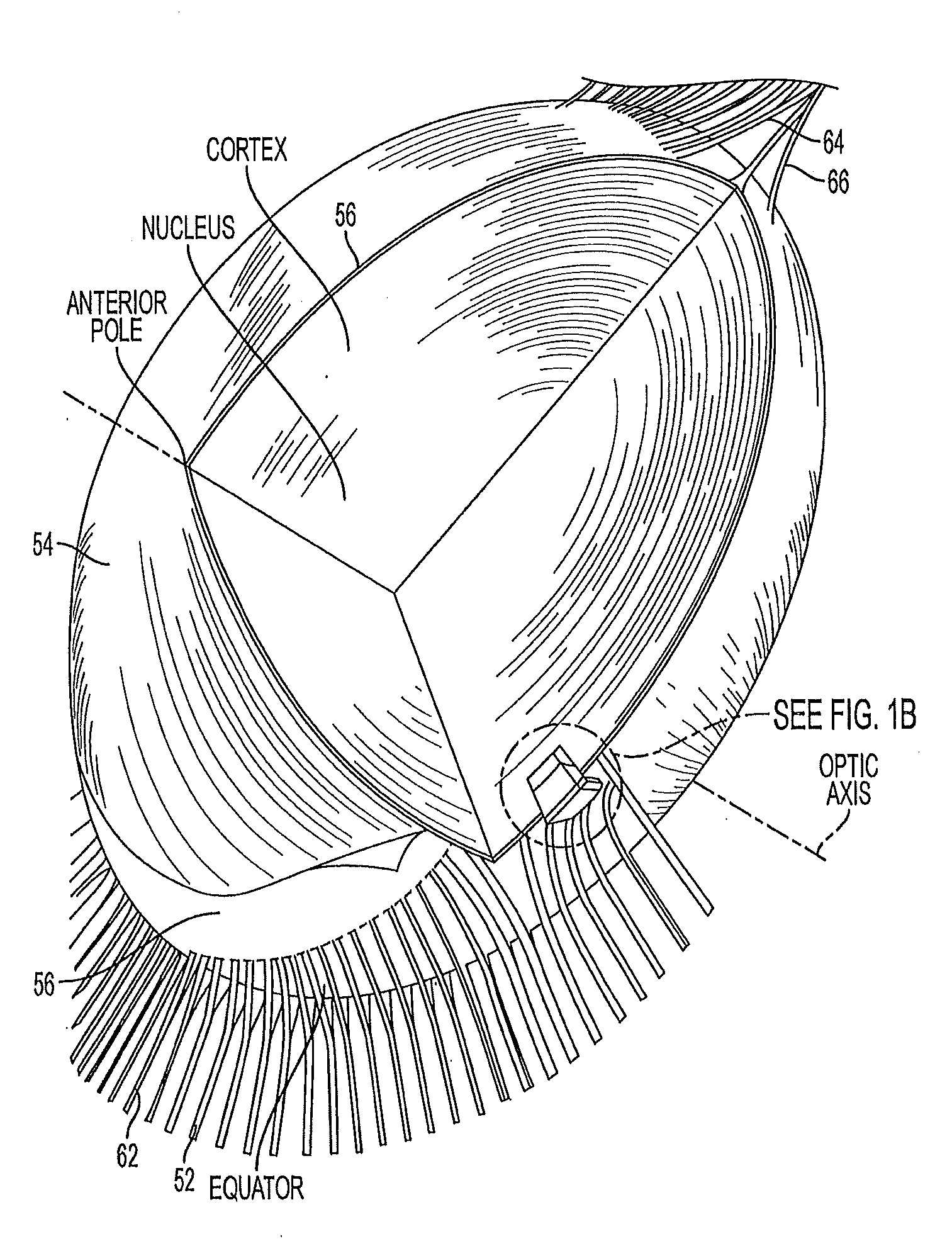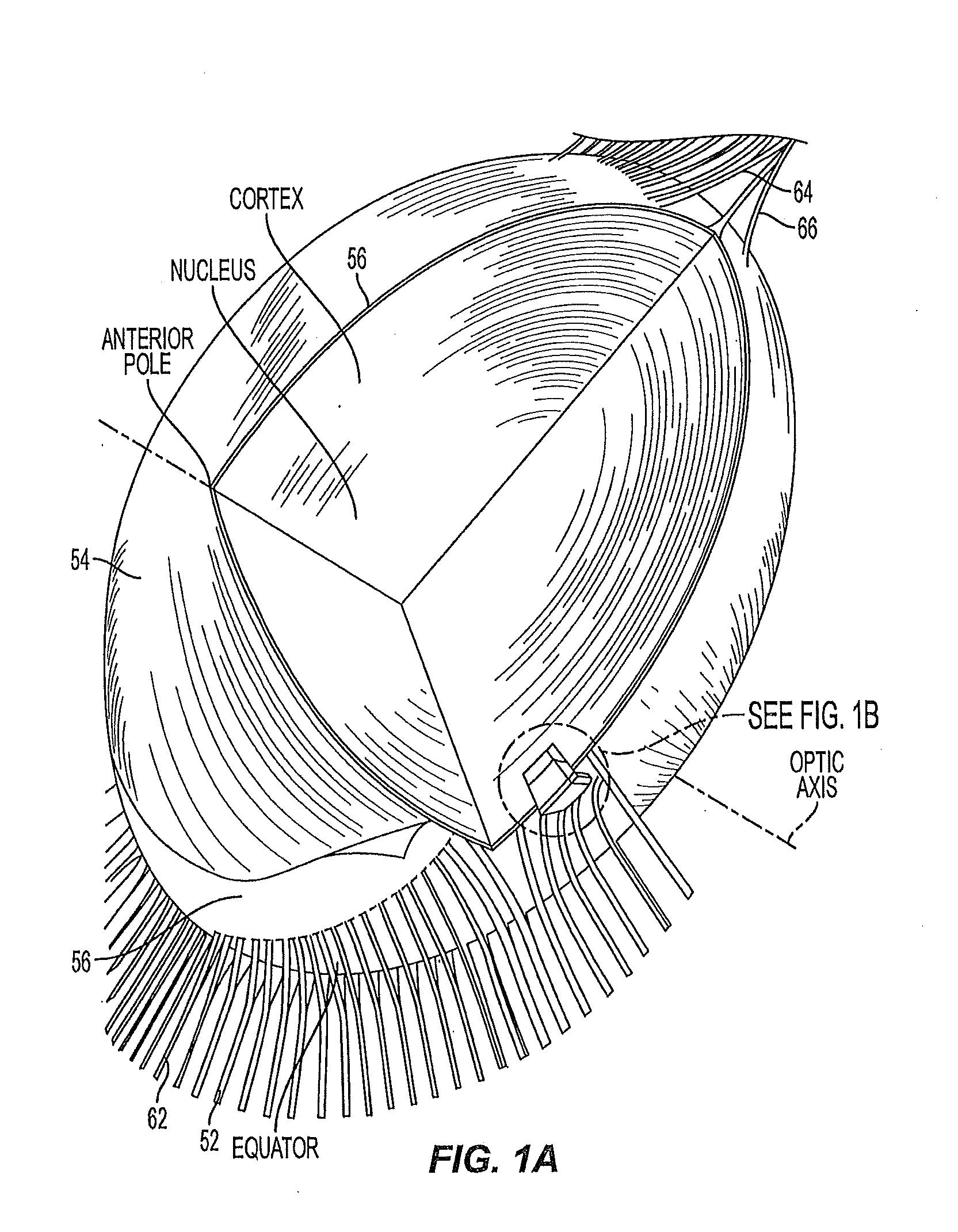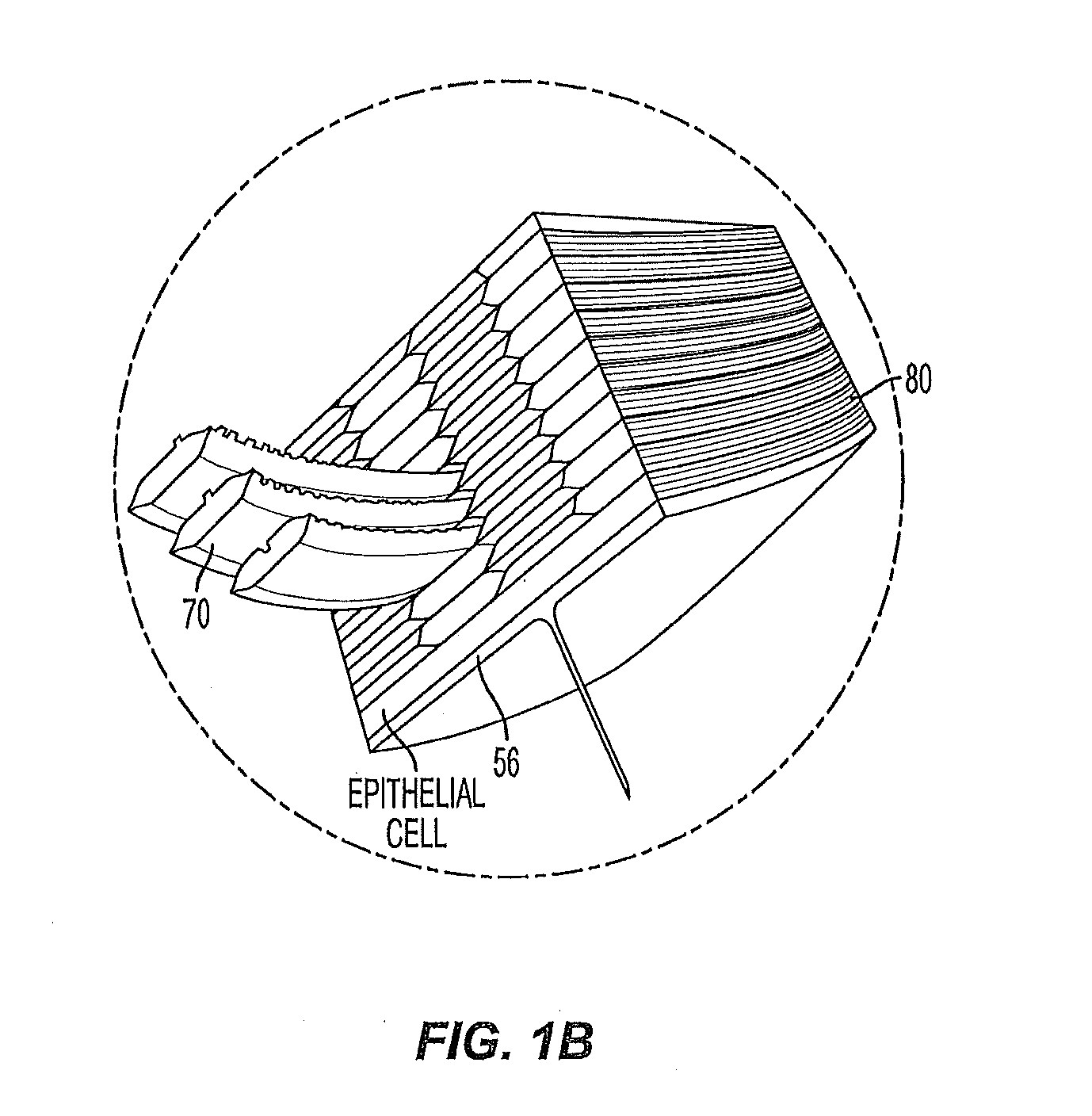Injectable physiologically adaptive intraocular lenses (iol's)
a technology of intraocular lenses and lenses, which is applied in the field of treating eyes, can solve the problems of clinical manifestation of presbyopia, inability to physiologically accommodate, and the natural shape of the capsular bag of the haptic, and achieve the effects of convenient accommodation, simple procedure and rapid performan
- Summary
- Abstract
- Description
- Claims
- Application Information
AI Technical Summary
Benefits of technology
Problems solved by technology
Method used
Image
Examples
example 1
IOL Device Example 1
[0104]Referring to FIG. 1D, an IOL 100 is comprised of a capsular interface 102, an anterior pole shape 104, a posterior pole shape 106, and an internal medium 108. The internal medium 108 is further comprised of anterior side 110 and posterior side 112. IOL 100 has an equatorial plane 114 which is co-planar with the interface between anterior side 110 and posterior side 112. The index of refraction of anterior side 110 is substantially equivalent to the index of refraction of posterior side 112. The capsular interface 102 possesses internal side 116 and external side 118. The intersection of the equatorial plane 114 with the capsular interface 102 is the equatorial circumference 120 of the capsular interface 102. Disposed posteriorly of the equatorial circumference 120 on the external side 118 are localization areas 122. The localization areas 122 adhere to the natural capsule, helping to center the IOL within the capsule and decreasing relative movement between...
example 2
IOL Device Example 2
[0107]In some cases a patient's accommodative capacity is markedly diminished and cannot be enhanced by providing an improved accommodative gain (optical power range) or set point (optical power mean). In this case, it may be necessary to interpose within the capsular interface a solid inflexible optic. While the scope of this invention includes combining the accommodative power of shape changes in the capsular interface with anterior-posterior translations of an optic, it is generally the case that acuity and contrast is superior in the instance of the fewest refractive index discontinuities. In order for the capsular shape to increase total eye optical power it would be necessary for the index of refraction inside the capsular interface to be somewhat higher than the index of refraction of the tissue anterior or posterior to the capsular interface. Accordingly, it is preferred the capsular bag be filled with a bi-phasic flowable medium with a refractive index c...
example 3
IOL Device Example 3
[0110]In this example, for illustrative purposes figures of Example 2 will be reused since the features that differentiate Example 3 over Example 2 are based on dimensional differences and not structural difference.
[0111]In some cases a patient's accommodative capacity is absent and cannot be enhanced by providing an improved accommodative gain (optical power range) or set point (optical power mean). In this case, the internal optic 412 and strip 408 can be configured within capsular interface 102 to achieve a bistable state. The bistable state is achieved when the optic 402 can translate through the equatorial diameter 424. In this case, finger pressure or flexing of muscles around the eye can allow the patient to select between an anterior biased position of optic 412 and a posterior biased position of optic 412. Thus, for the fixed accommodative state of the patient's eye, there are two minimum energy configurations of the strip 408 within the capsular interfa...
PUM
 Login to View More
Login to View More Abstract
Description
Claims
Application Information
 Login to View More
Login to View More - R&D
- Intellectual Property
- Life Sciences
- Materials
- Tech Scout
- Unparalleled Data Quality
- Higher Quality Content
- 60% Fewer Hallucinations
Browse by: Latest US Patents, China's latest patents, Technical Efficacy Thesaurus, Application Domain, Technology Topic, Popular Technical Reports.
© 2025 PatSnap. All rights reserved.Legal|Privacy policy|Modern Slavery Act Transparency Statement|Sitemap|About US| Contact US: help@patsnap.com



